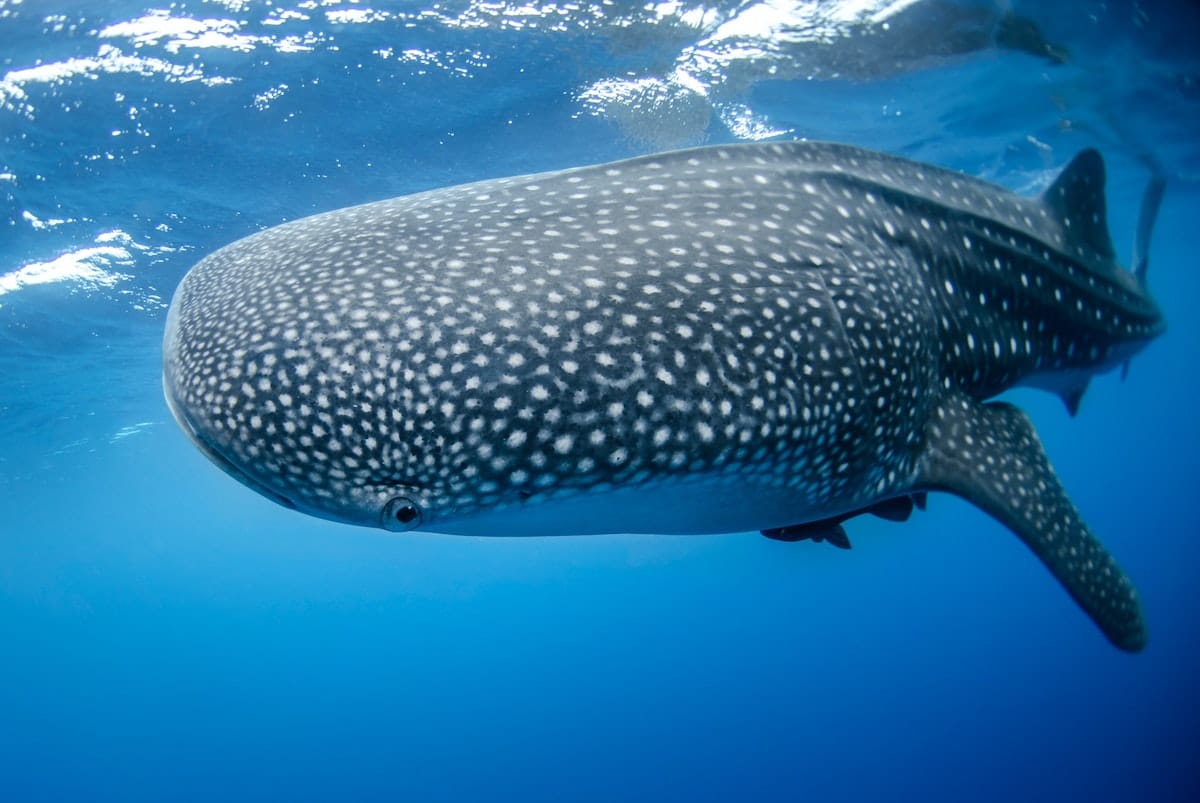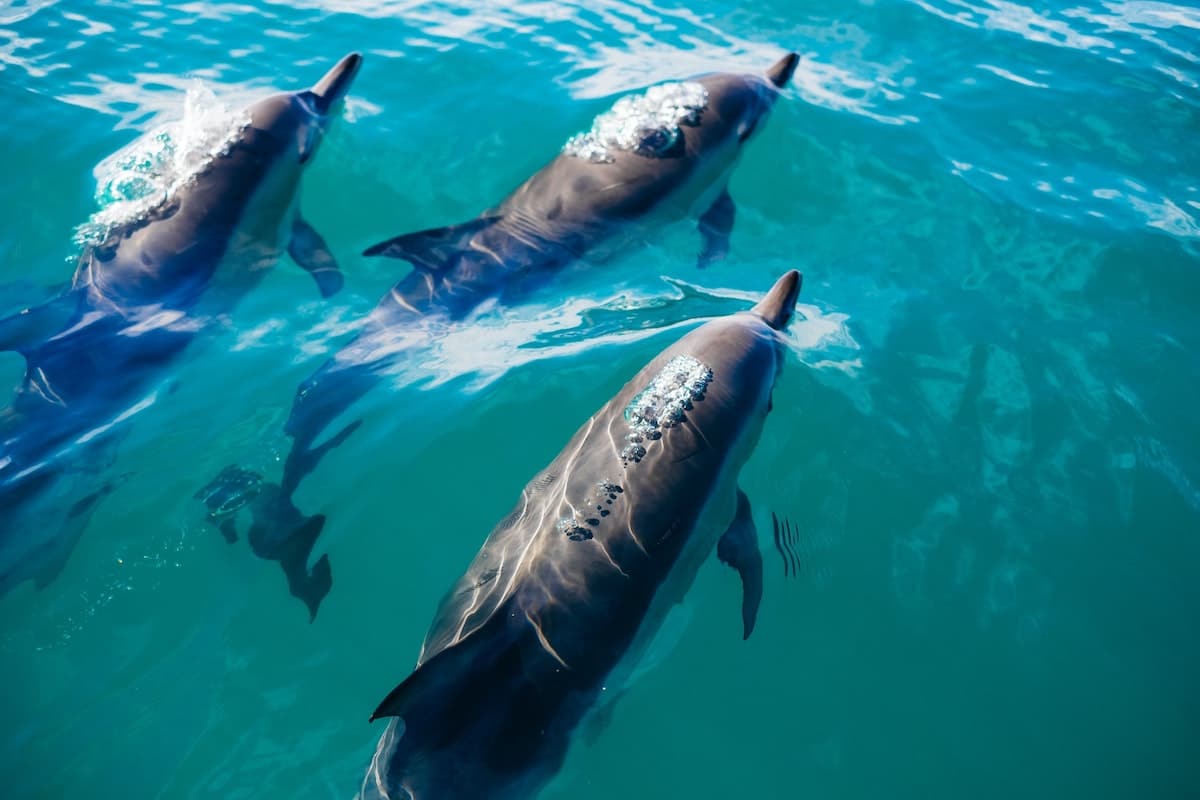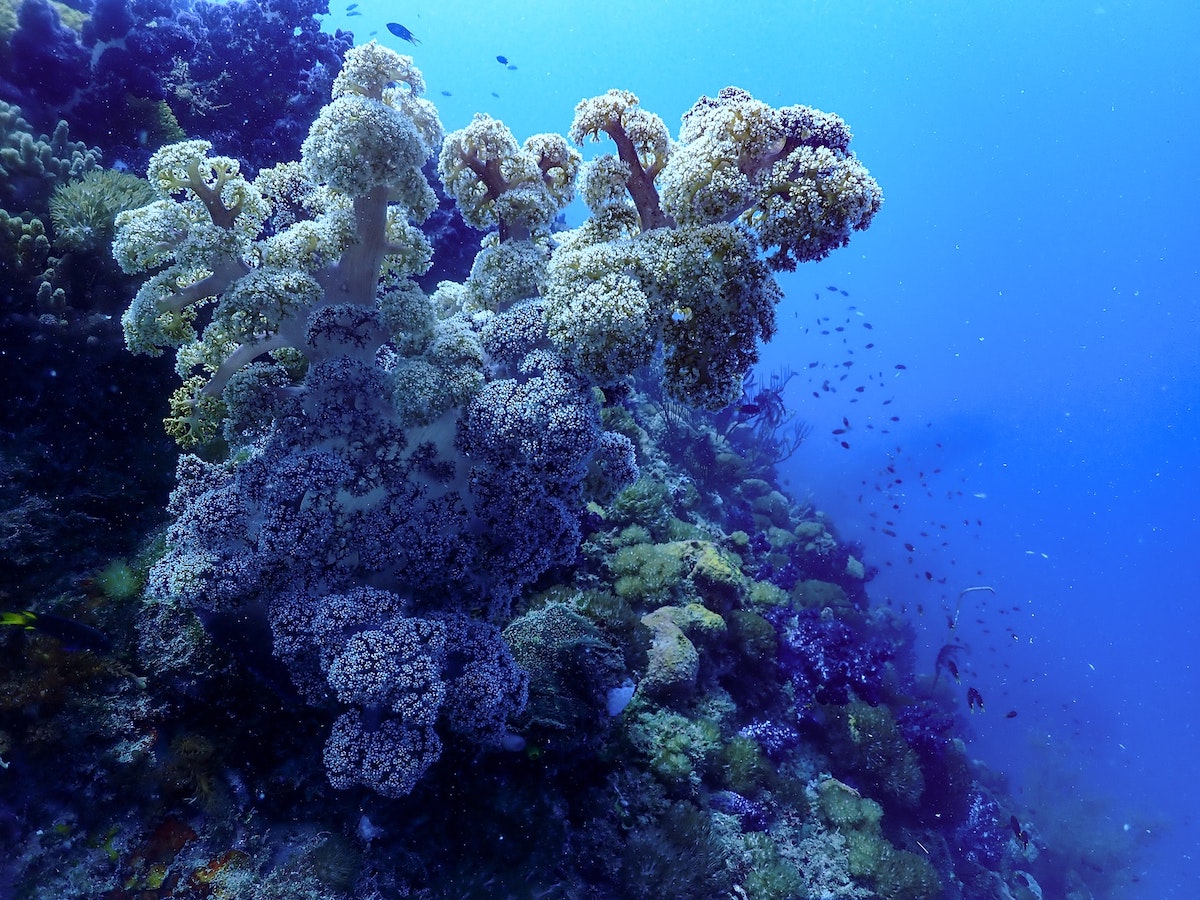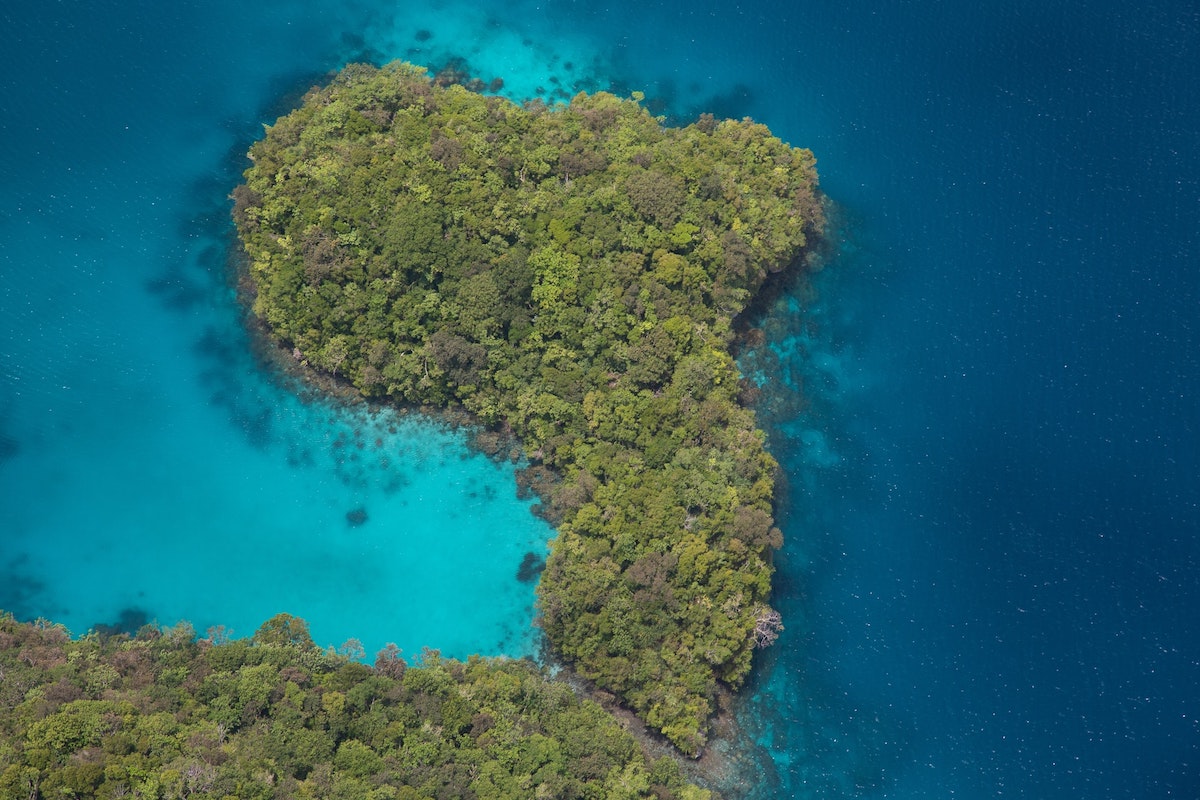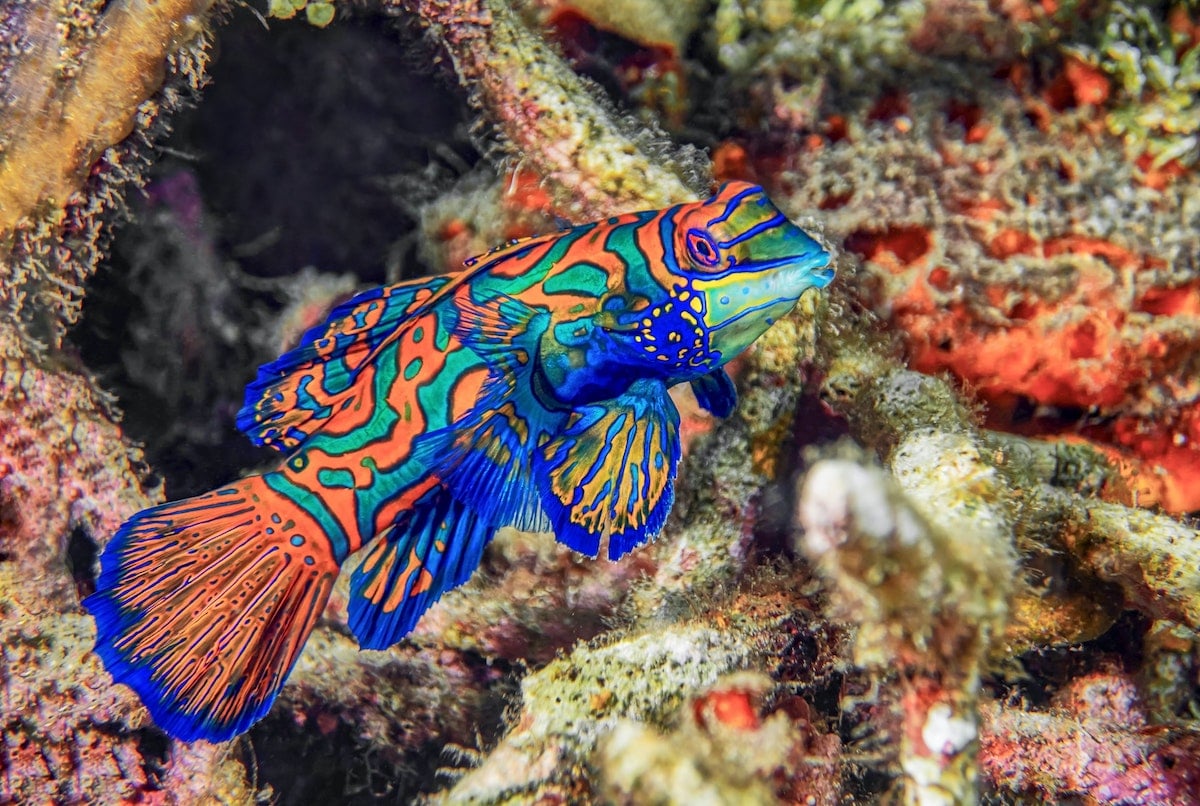News
Top 12 Dive Destinations in Oceania – Part 1
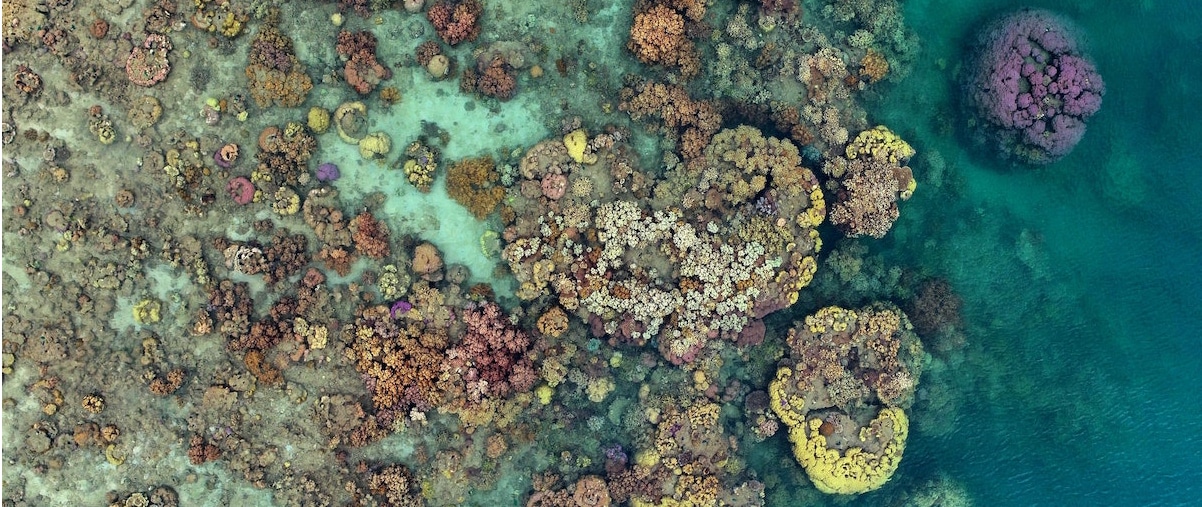
Encompassing over 8 million square kilometers of clear blue waters, Oceania hosts some of the world’s most sought-after dive destinations. There are remote, untouched reefs and wreck diving meccas, countless forest-draped islands, and volcanic landscapes with rich black sands full of critters. With abundant marine megafauna as well, including mantas, whales, dolphins, seals, sharks, and tens of thousands of sea turtles, Oceania is a paradise for every diver. Read on for part I of our round-up of 12 great places to go diving in Oceania.
Australia
Drop a pin on a map of Australia’s vast coastline and you will likely land close to some epic scuba diving. There are dozens of places to experience the best of Australia’s rich and varied dive scene.
In the remote northern reaches of the Great Barrier Reef, you can dive Raine Island, a famous coral cay and sea turtle nesting area that hosts more than 60,000 green turtles each nesting season.
A little further south at Cairns, there is classic Great Barrier Reef scuba diving, including shark diving, snorkeling with dwarf minke whales, and numerous offshore reefs. It is also one of the best places to get your diving license.
The southern Great Barrier Reef hosts Australia’s best-known manta ray hotspots, Lady Elliot Island and Lady Musgrave Island. As well hosting over 100 mantas, the southern Great Barrier Reef also hosts one of the world’s best-preserved wrecks, the SS Yongala.
There is also excellent diving close to many of Australia’s coastal towns and cities. You can go diving with beautiful weedy sea dragons near Melbourne, go cage diving with great white sharks off Port Lincoln, or hang out with enormous stingrays in Port Philip Bay.
With Ningaloo Reef’s many whale sharks, remote coral atoll diving at Rowley Shoals, and diving with nurse sharks at Fish Rock Cave as well, you’ll be spoiled for choice wherever you go.
New Zealand
New Zealand may be a lot smaller than Australia, but it packs a punch when it comes to scuba diving. With over 600 islands, 44 marine reserves, and the 9th longest coastline in the world, diving in New Zealand is diverse and fascinating.
Sun-soaked Northland is the best place to start your diving trip and features the colorful Rainbow Warrior and HMNZS Canterbury wrecks and the Poor Knights Islands. These unique islands were rated as one of the world’s top ten dives by Jacques Cousteau and offer sub-tropical diving with both temperate species and tropical visitors.
Further south, the Mercury and Aldermen Islands are dotted with white sand beaches and have fantastic warm-water diving. There are enough submerged caves, pinnacles and drop-offs to keep any diver busy. Seasonal visitors include whales, bronze whaler sharks, makos and marlin.
If you love wreck diving, make sure you dive the Mikhael Lermontov in the Marlborough Sounds. This 155-meter-long cruise ship is one of the largest modern diving wrecks and has many of its original furnishings.
Make sure you drive south to Kaikoura if you love whales and sea birds. Kaikoura is one of the only places in the world with a resident population of sperm whales, plus visiting orcas, humpback whales and numerous albatrosses. You can also swim with seals and dolphins there.
Last but by no means least, visit Fiordland – a jaw-dropping 2.6 million hectare UNESCO World Heritage Site. This vast wilderness area hosts spectacular multi-day hikes and has excellent cold-water diving and rare black corals in Milford Sound.
Fiji
Fiji is a classic dive destination in Oceania, offering a wealth of palm-fringed islands and dive highlights worthy of any bucket list. If you’re looking for a destination that has something for every dive experience level, and plenty for non-divers too, Fiji could be for you.
Viti Levu, the main tourism hub, is famous for its shark dives with bull, tiger and reef sharks. There are also beautiful coral reefs just offshore. Go island hopping from Viti Levu and you’ll be immersed in a world of vibrant soft coral landscapes, with manta ray cleaning stations, thrilling drift dives and fast-paced pelagic action.
If you like laid-back diving, you could easily while away your days drifting over Fiji’s many shallow coral gardens. That said, it pays to go deep and experience Fiji’s famously colorful Great White Wall and Purple Wall dive sites.
On your non-diving days, be sure to explore topside. The friendly Fijian welcome, excellent jungle hikes, lush rainforests and waterfalls are not to be missed.
The Federated States of Micronesia
Micronesia is high on the wish list for many divers and is a tropical paradise destination with over 600 islands. It is best-known as a wreck diving mecca, with dozens of World War II wrecks.
The wrecks of Chuuk Lagoon are renowned among divers as some of the best in the world. This calm, warm lagoon was the site of a fierce battle in World War II that resulted in hundreds of ships, planes and submarines sinking. Today, around 50 of the wrecks can be dived and they are covered in rainbow-hued corals. Diving among the tanks, trucks and airplanes of the lagoon brings history to life in the most vivid way.
Micronesia’s rich waters also host countless shallow reefs, famous manta ray diving at Yap, exciting walls, caverns and drop-offs. If you’re prepared to go off the beaten path, Kosrae has some of the most pristine diving in the world.
Palau
Palau is ideal for divers who like to experience a range of dive styles in one trip and encounter marine life large and small.
This picture-perfect destination has diverse underwater highlights, including diving at a natural corner in the ocean, plunging walls, World War II wrecks, and famous manta ray dives. There is also excellent cave diving, and you can swim with millions of harmless jellyfish.
Wherever you dive, you can tick off some of Palau’s 1300 fish species and 700 coral species. Dugongs, Napoleon wrasse and giant clams are some of the more unusual big marine species to find and you can spot rare mandarinfish at Chandelier Caves. Being the world’s first shark sanctuary, Palau’s waters are also busy with sharks.
Kathryn Curzon, a shark conservationist and dive travel writer for SSI (Scuba Schools International), wrote this article.
News
Book Review: Fire on Monroe Bravo by Fred Lockwood

Fire on Monroe Bravo is the latest book in the Jack Collier series by Fred Lockwood. Our story begins with our lead characters, Jack and Sandro, owners of Marine Salvage & Investigation Company, arriving on the Monroe Bravo Oil & Gas Platform in the North Sea. Having secured a contract for their vessel the MV Stavanger to act as support ship to the platform for TransGlobal Oil, our protagonists are on a celebratory visit.
However almost as soon as they arrive a series of explosions rock the platform, causing huge damage, loss of life and the very real danger of a massive human, ecological and financial disaster.

As the danger mounts for both our heroes and the surviving workers, Jack and Sandro will have to escape the inferno, all while trying to save the platform and the men still trapped unable to help themselves.
The disaster sets the scene for the unfolding story lines following the fate of the platform and our main characters, the police investigation into a suspected terrorist act and the actions of TransGlobal Oil as they attempt to navigate the pubic outcry and financial repercussions.
In his eighth book, Fire on Monroe Bravo, Fred Lockwood delivers an explosive thriller, with plenty of above and in-water drama, and our heroes fighting for survival, what more can you ask for?
We thoroughly recommend this read and look forward to the next in the series. For more information about his book series, you can check out the reviews of his previous books here on Scubaverse.
- Title: Fire On Monroe Bravo
- Author: Fred Lockwood
- ISBN: 979-8325324536
Available in a paperback version and for Kindle from Amazon and book stores.
Blogs
Alonissos: The complete diving destination (Part 1)

In June we were incredibly fortunate to be invited to dive in Alonissos, a small Greek Island in the Sporades island chain located in the North Aegean Sea. While I have long been a big fan of the Greek Islands as a great holiday destination, I had not had the opportunity to do any diving on previous visits and Mike and I were extremely excited to see what Alonissos had to offer both above and below the surface!

The Sporades are easily accessible via the airport in Skiathos (the first island in the chain), which is served by Jet2 flights from all major UK airports from May through October. Numerous ferries and charter boats make island hopping from Skiathos Town a breeze. After an hour boat ride, the picturesque port of Patitiri was a wonderful introduction to Alonissos, where we were met by our gracious hosts Kostas of Albedo Travel and Dias of Alonissos Triton Dive Center. Mike and I were delighted to be staying at the Paradise Hotel, aptly named for its stunning views over the sea and great location for walking to the waterfront.

Alonissos is beautifully situated in the National Marine Park of Alonissos and the Northern Sporades, the largest marine protected area in Europe. The surrounding seas offer fabulous marine life, including incredibly rare species such as the Mediterranean monk seal. They boast deep walls covered in gorgonians and sponges, stunning topography with caverns, swimthroughs and pinnacles, and the first accessible ancient shipwreck from 500BC!

In locations where historical sites have been reported, the waters are largely restricted, but with collaboration between government, underwater archeologists and dive centres, incredible underwater museums are being created for a truly unique diving experience. Alonissos is home to the first of these, the Ancient Shipwreck of Peristera Accessible Underwater Archeological Site. The chance to dive into history (along with reports of healthy reef life and amazing underwater topography) meant Mike and I were keen to get in the water.

Our introduction to the diving around Alonissos was at the Agios Georgios Pinnacles, in the channel between Alonissos and Skopelos. This fantastic site was named “The Chimney,’ and proved to have a huge amount to see. We got to a decent depth here (over 25m), and marvelled at a colourful reef wall with a wonderful swim through whose rocky walls were absolutely covered with life. As well as brilliant topography there was no shortage of macro life here. We saw numerous nudibranchs, five different species in total. The second dive at Mourtias reef nearby was a shallower dive along a nice wall with lots of crevices. Several moray eels and grouper called this site home. We enjoyed looking in the crevices for lobster and smaller benthic life, such as cup corals and tunicates.

Our itinerary allowed us two dives a day with afternoons left to explore the island with our hire car and evenings to enjoy the famous Greek hospitality. This proved to be a lovely mix of in-water and land based diversions.

The next days diving to the Gorgonian Gardens and Triton’s Cave was to be even better! These two stunning sites are nothing short of fabulous. The Gorgonian Gardens was a deep wall near to the Agios Georgios islands. The ever-present currents in this deep channel meant that the sea life was amazing … the namesake Gorgonian sea fans dotted the wall at a depth of 30 to 50 meters, getting ever larger the deeper we went. Above 30m was by no means less beautiful, with sponges, corals, scorpionfish, moray eels and some rare and colourful nudibranchs.

The second shallower dive of the day was to Triton’s Cave or the Cavern of Skopelos, on the east side of that island. The spectacular rock formations had wild striations both above and below the water making a truly epic topography. The cavern entrance was at 14m, and big enough for a buddy pair, winding up to 6m and passing two beautiful windows out into the blue. Emerging from the cavern, the light at the shallower depths and the incredible rock formations made for a fantastic gentle swimming safety stop and we all surfaced by the boat with massive grins.

Check out our next blog :Alonissos: The complete diving destination (Part 2)” to hear about our amazing dive on the 2500 year old Peristera Wreck!
Thanks to:
Alonissos Triton Dive Center https://bestdivingingreece.com/
Albedo Travel https://alonissosholidays.com/activities/
Paradise Hotel https://paradise-hotel.gr/
Alonissos Municipality https://alonissos.gr/en/
-

 Blogs2 months ago
Blogs2 months agoDiving With… Nico, Ocean Earth Travels, Indonesia
-

 News1 month ago
News1 month agoMurex Bangka Announce New Oceanfront Cottages & Beachfront Dining
-

 Blogs2 months ago
Blogs2 months agoA new idea in freediving from RAID
-

 Marine Life & Conservation1 month ago
Marine Life & Conservation1 month agoIceland issue millionaire whale hunter a licence to murder 128 vulnerable fin whales
-

 Marine Life & Conservation2 months ago
Marine Life & Conservation2 months agoThe Shark Trust Great Shark Snapshot is back
-

 News3 months ago
News3 months agoCharting New Waters; NovoScuba Goes Global with the Launch of their Revolutionary Dive Training Agency!
-

 Gear News1 month ago
Gear News1 month agoNew Suunto Ocean – a dive computer and GPS sports watch in one for adventures below and above the surface
-

 Marine Life & Conservation Blogs2 months ago
Marine Life & Conservation Blogs2 months agoBook Review: Plankton


